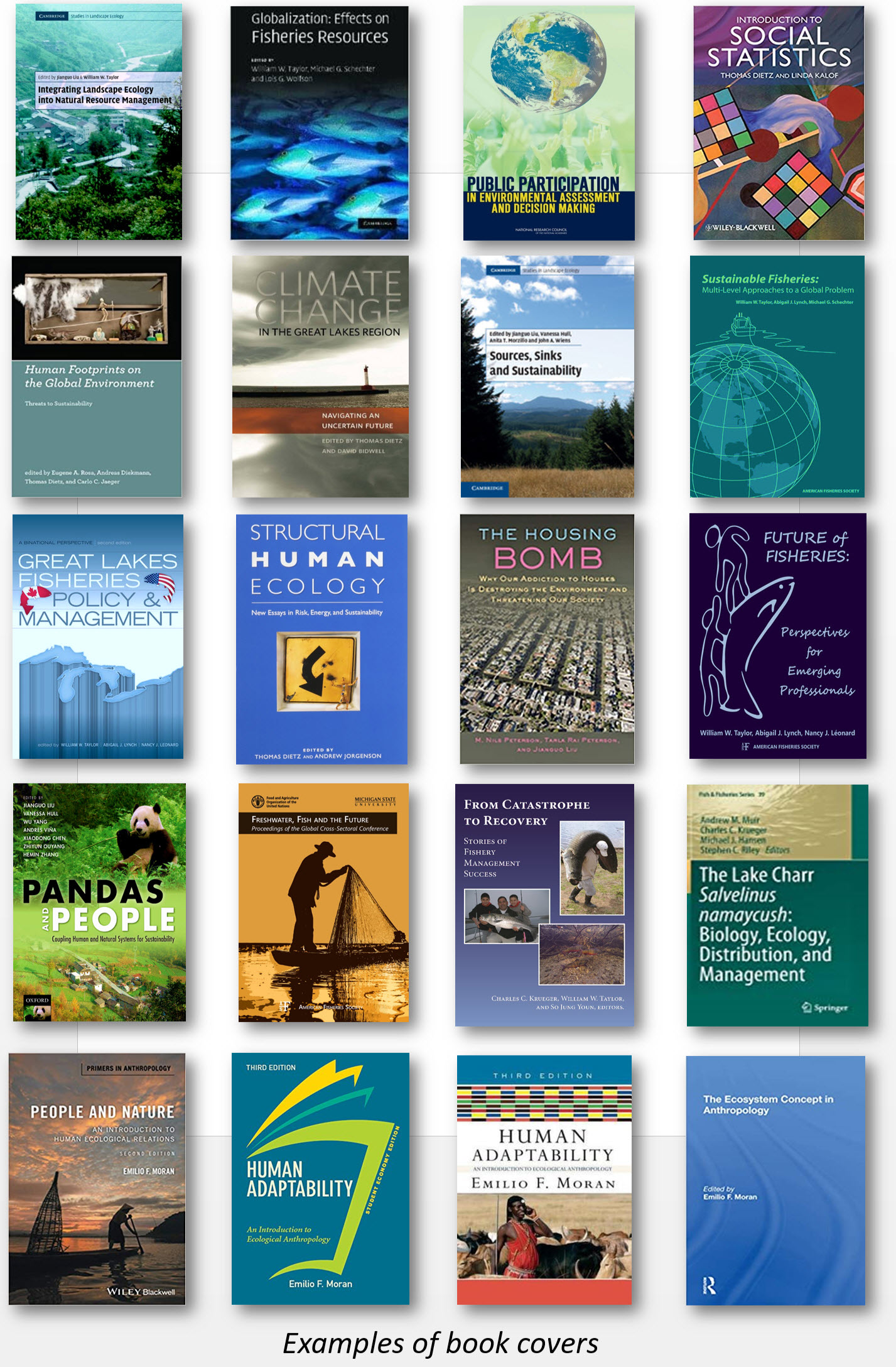Publications
Journal Articles
A list of journal articles published by CSIS members, including 3 cover stories in Nature, 24 appearances in Science, and 17 in PNAS (Proceedings of the National Academy of Sciences of the United States of America).
Books and Book Chapters
Selected books (edited books) and book chapters published by CSIS members.
Publications
-
Divergent reaction of fish metrics to human pressures in fish assemblage types in Europe
Published on September 25, 2015
It is of primary importance to understand the comparative sensitivity and efficiency of fish-based indicators of water quality for detecting human-induced degradation of river ecosystems. -
Multiple human pressures and their spatial patterns in European running waters
Published on September 25, 2015
This study represents the first high-resolution data analysis of human pressures at the European scale, where important pressure criteria for 9330 sampling sites in 14 European countries were analysed. -
Pressure-specific and multiple pressure response of fish assemblages in European running waters
Published on September 25, 2015
Results contribute to the better understanding of fish assemblage response to human pressures at a pan-European scale. -
A new fish-based multi-metric assessment index for cyprinid streams in the Iranian Caspian Sea Basin
Published on September 25, 2015
The overall aim of this study is to develop a multi-metric fish index for the cyprinid streams of the Caspian Sea Basin (MMICS) in Iran. -
Cumulative effects of land use on fish metrics in different types of running waters in Austria
Published on September 25, 2015
Beyond correlative analysis, we investigated which land-use category had the strongest effect on fish, whether metrics of functional fish guilds reacted differently, whether there were cumulative effects of land-use categories. -
Comparison of human pressures and fish assemblages in the salmonid and cyprinid streams of the southern Caspian Sea basin
Published on September 25, 2015
Our analysis showed that the most dominating human pressure in both zones was land use followed by water quality and morphological pressures especially in salmonid streams and hydrological and morphological pressures in cyprinid streams. -
Predicting presence and absence of trout (Salmo trutta) in Iran
Published on September 25, 2015
This study explores the potential distribution of brown trout by a species distribution modelling approach for Iran. -
Spatiotemporal patterns of non-genetically modified crops in the era of expansion of genetically modified food
Published on September 23, 2015
Despite heated debates over the safety of genetically modified (GM) food, GM crops have been expanding rapidly. -
ECOLOGY AND SOCIETY -- Synthesis of human-nature feedbacks
Published on September 11, 2015
In an introduction to the special feature, we provide an overview of CHANS feedbacks. In addition, we synthesize key CHANS feedbacks that emerged in the papers across agricultural, forest, and urban landscapes. -
Assessment of Coastal Ecosystem Services for Conservation Strategies in South Korea
Published on August 13, 2015
As cultural ecosystem services are evenly distributed throughout coastal areas of South Korea, decision makers may employ them to improve the conditions of coastal wetlands outside of protected areas. -
Inland capture fishery contributions to global food security and threats to their future
Published on August 11, 2015
This paper highlights the importance of inland fisheries to global food security, the challenges they face due to competing demands for freshwater, and possible solutions. -
Activity patterns of the giant panda
Published on July 30, 2015
Activity patterns of the elusive and endangered giant panda (Ailuropoda melanoleuca) are not well understood -
An integrated approach to understanding the linkages between ecosystem services and human well-being
Published on July 22, 2015
We examined how human dependence on ES and HWB might be affected by direct drivers, such as a natural disaster, and how human dependence on ES and direct and indirect drivers might affect HWB. -
Quantifying human well-being for sustainability research and policy
Published on July 17, 2015
To address human dependence on natural resources and anthropogenic impacts on ecosystem health, understanding and management of the linkages between nature and human well-being (HWB) are urgently needed. -
Heritage Brook Trout in Northeastern USA: Genetic Variability within and among Populations
Published on July 6, 2015
Brook trout Salvelinus fontinalis from 21 unstocked waters, 3 naturalized lakes, and 4 hatcheries in New York and Pennsylvania were analyzed electrophoretically for allozyme expression. Thirty-two of the 68 loci examined were polymorphic. -
Diet and Prey Selection of Naturalized Smallmouth Bass in an Oligotrophic Adirondack Lake
Published on July 6, 2015
Smallmouth bass (Micropterus dolomieu) introduced nearly 50 years ago have established a permanent population in Little Moose Lake, NY. -
Stock Structure of Rainbow Smelt in Western Lake Superior: Biochemical Genetics
Published on July 6, 2015
Serum transferrin (TFN) and glucosephosphate isomerase from white muscle were examined in rainbow smelt Osmerus mordax from Lake Superio -
Growth, Mortality, and Mark Retention of Hatchery Brook Trout Marked with Visible Implant Tags, Jaw Tags, and Adipose Fin Clips
Published on July 6, 2015
Growth, mortality, mark retention, and mark readability were compared among control and treatment groups of 197-265-mm hatchery brook trout Salvelinus fontinalis marked with visible implant tags, adipose tin clips, or stainless steel circularstrap jaw tags -
Survival, Growth, Movement, and Distribution of Two Brook Trout Strains Stocked into Small Adirondack Streams
Published on July 6, 2015
Six field trials were conducted in two streams to compare the survival, growth, movement, and distribution of young-of-year Assinica strain and Temiscamie strain brook trout Salvelinus fontinalis 15-91 d after stocking -
Sea Lamprey (Petromyzon marinus) Populations in Northeastern North America: Genetic Differentiation and Affinities
Published on July 6, 2015
We examined genetic population structure in 3253 sea lampreys (Petromyzon marinus) sampled at 53 sites in northeastern North America and the British Isles





 Print
Print Email
Email